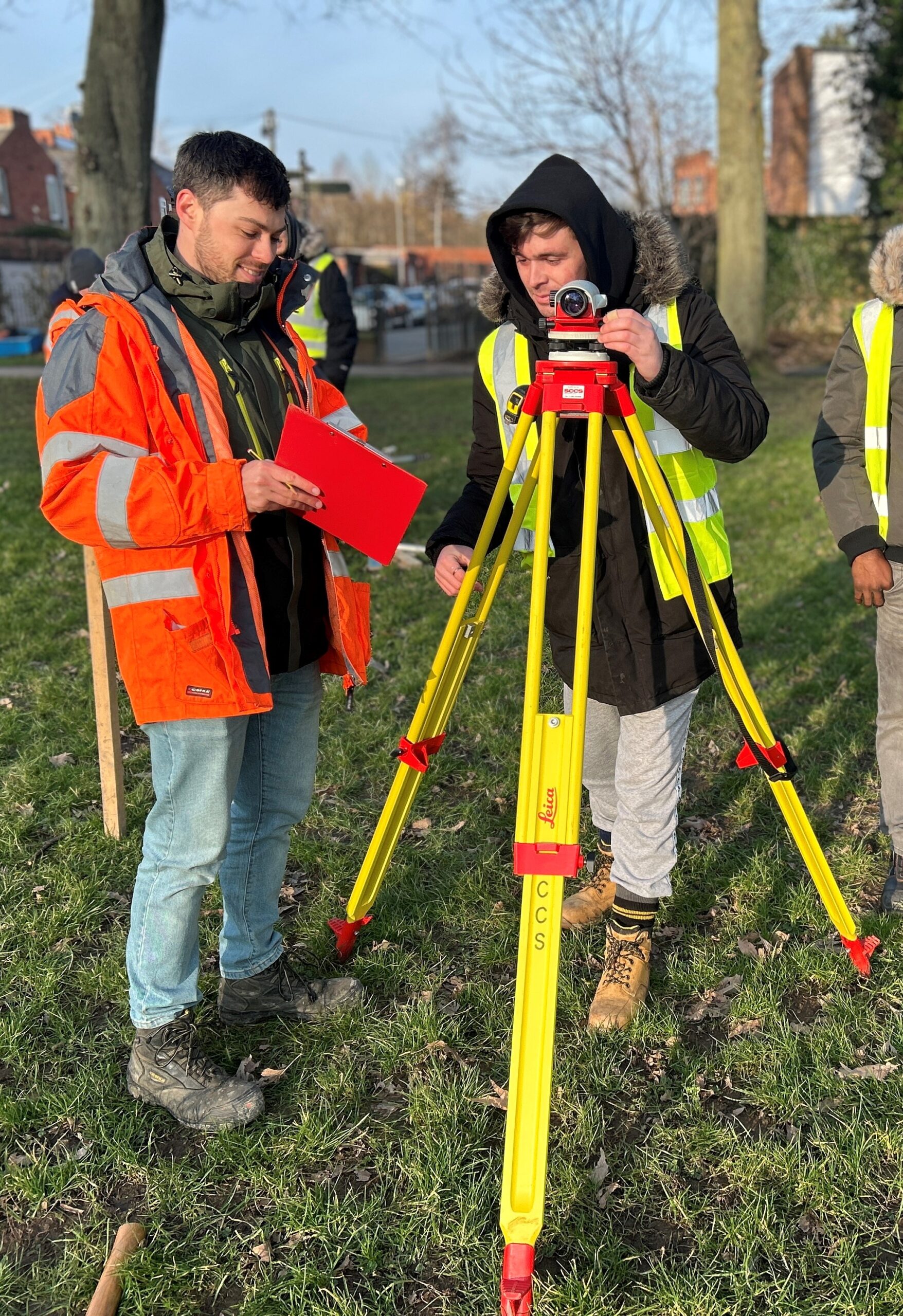Published: 11 Jun 2025
A practical guide for employers – whether you’re hiring new talent or developing your existing team.
Contrary to popular belief, apprenticeships are not just for young people starting their careers. Apprenticeships are one of the most cost-effective and impactful ways to upskill your existing staff, drive performance, and support retention.
Whether you are recruiting new talent or investing in your current workforce, our guide breaks down how apprenticeships work and what to expect as an employer.
What’s included in an apprenticeship programme?
Every apprenticeship is built around a government-approved standard, which outlines:
- Knowledge the learner will gain
- Skills they will develop
- Behaviours they are expected to demonstrate in their role.
Knowledge, Skills and Behaviours, (KSBs) are developed through a mix of on-the-job training (in the workplace) and off-the-job learning (delivered by a training provider, such as a College, University or Private Training Company).
The standards (outlining the curriculum) are all outlined on the government website which can be found here.
Embedded within the apprenticeship is an academic qualification – the TQUK Level 3 Diploma in Geospatial Surveying for the level 3 apprenticeship and a Bachelor of Science degree in the level 6.
Who delivers the training?
Only approved providers can deliver apprenticeships. These are listed on the Apprenticeship Provider and Assessment Register (APAR). Depending on the provider, training may be delivered via:
- Block release (e.g. two-week college blocks)
- Day release (e.g. one day per week at university)
- Online/blended options (increasingly common and useful for existing employees)
Example providers for Geospatial Apprenticeships are:
Level 3 – Geospatial Survey Technician
- Dudley College of Technology (block release)
- Riverside College, Widnes (block release)
- Suffolk New College, Ipswich campus (day release)
- Other colleges coming on board
Level 6 – Geospatial Mapping and Science Specialist (Degree)
- University of East London (day release during term time)
- Other options coming soon
If you’re looking to develop internal talent, speak to your training provider about flexible delivery models that suit working professionals.
Where do I advertise to take on an apprentice?
When recruiting new staff as apprentices, you can advertise through:
- Find an Apprenticeship – GOV.UK
- Your training provider (they often promote roles for you)
- Your own website, social media, or recruitment channels
- Sector-specific sites (e.g. The Survey Association for geospatial roles)
If you are using apprenticeships to upskill existing staff, there is no need to advertise—just identify the right individual and enrol them onto the relevant apprenticeship standard with your chosen training provider.
How much supervision or support is needed?
Apprentices (whether new or existing staff) need a structured support system to succeed.
As the employer, your responsibilities include:
- Appointing a workplace mentor or supervisor
- Supporting regular 10–12 weekly reviews, also known as tripartite meetings, involving:
- You (or the mentor)
- The apprentice
- The training provider
These reviews are required under ESFA (Education and Skills Funding Agency – part of Department for Education) funding rules and help ensure that progress is monitored, issues are addressed early, and the learning stays aligned to workplace needs.
When upskilling current staff, this structure reinforces their development and allows for real-time application of skills in their role.
You can learn more about your responsibilities as an employer here:
Your responsibilities as an employer – GOV.UK
What are the first steps to hiring or upskilling through apprenticeships?
Whether you’re hiring new talent or developing someone already on your team, the steps are largely the same:
- Choose the right apprenticeship standard for the role or upskilling need
- Find an approved training provider
- Set up a digital Apprenticeship Service (DAS) account
- Recruit a new apprentice or select an internal staff member
- Enrol the apprentice with the provider
- Sign the apprenticeship and training agreements
Using apprenticeships to upskill your team can align perfectly with progression plans, restructure projects, or digital transformation efforts.
How much will it cost?
The government covers 95–100% of apprenticeship training costs, making it one of the most affordable ways to develop staff:
- Levy-paying employers (annual payroll over £3 million) can use their levy funds to pay for training
- Non-levy employers pay just 5% of the training cost, with government covering the rest
If you are upskilling existing staff, you continue to pay their salary as normal. There is no requirement to reduce pay when someone becomes an apprentice. This makes apprenticeships a powerful retention and development tool—particularly for team members stepping into new responsibilities.
How are apprenticeships assessed?
All apprentices complete an End-Point Assessment (EPA) at the end of their programme to demonstrate full occupational competence.
An EPA may include:
- A professional discussion or interview
- Practical assessments or observations
- A portfolio of evidence or project presentation
The EPA is carried out by an independent End-Point Assessment Organisation (EPAO)—for example, Verge365 for geospatial roles.
More information on EPAs can be found here: End-point assessment guidance – IfATE
Useful Links and Resources
- Hire an apprentice – GOV.UK
- How to take on an apprentice – GOV.UK
- Employing an apprentice – GOV.UK
- Set up an Apprenticeship Service Account – GOV.UK
- Employer responsibilities

